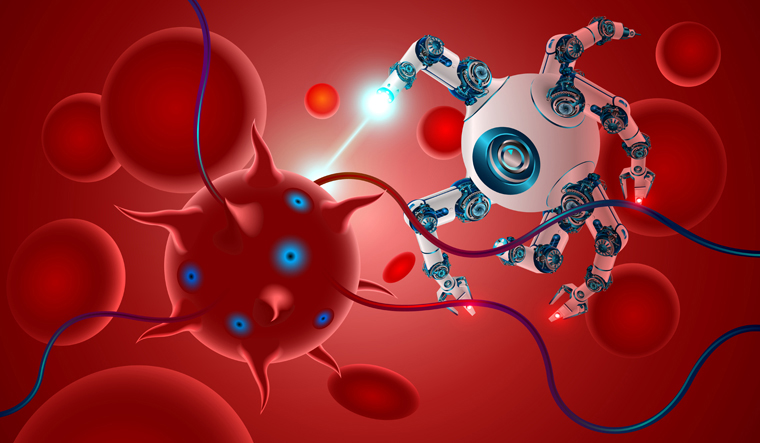Scientists have developed tiny, smart robots that can swim through blood vessels, paving the way for ingestible machines that could deliver drugs directly to diseased tissue in the future.
The researchers from Swiss Federal Institute of Technology Lausanne (EPFL) and ETH Zurich in Switzerland drew inspiration from bacteria to design the highly flexible biocompatible micro-robots.
Since these devices are able to swim through fluids and modify their shape when needed, they can pass through narrow blood vessels and intricate systems without compromising on speed or manoeuvrability.
They are made of hydrogel nanocomposites that contain magnetic nanoparticles, allowing them to be controlled via an electromagnetic field, researchers said.
The study, published in the journal Science Advances, describes a method for programming the robot's shape so that it can easily travel through fluids that are dense, viscous or moving at rapid speeds.
Fabricating miniaturised robots presents a host of challenges, which the scientists addressed using an origami-based folding method.
Their novel locomotion strategy employs embodied intelligence, which is an alternative to the classical computation paradigm that is performed by embedded electronic systems.
"Our robots have a special composition and structure that allows them to adapt to the characteristics of the fluid they are moving through," said Selman Sakar from EPFL.
"For instance, if they encounter a change in viscosity or osmotic concentration, they modify their shape to maintain their speed and manoeuvrability without losing control of the direction of motion," said Sakar, who led the study.
These deformations can be programmed in advance so as to maximise performance without the use of cumbersome sensors or actuators.
The robots can be either controlled using an electromagnetic field or left to navigate on their own through cavities by utilising fluid flow.
Either way, they will automatically morph into the most efficient shape.
"Nature has evolved a multitude of microorganisms that change shape as their environmental conditions change. This basic principle inspired our micro-robot design," said Bradley Nelson at ETH Zurich.
"The key challenge for us was to develop the physics that describe the types of changes we were interested in, and then to integrate this with new fabrication technologies," said Nelson.
In addition to offering enhanced effectiveness, these miniaturised soft robots can also be manufactured easily at a reasonable cost.
For now, the research team is working on improving the performance for swimming through complex fluids like those found in the human body.



